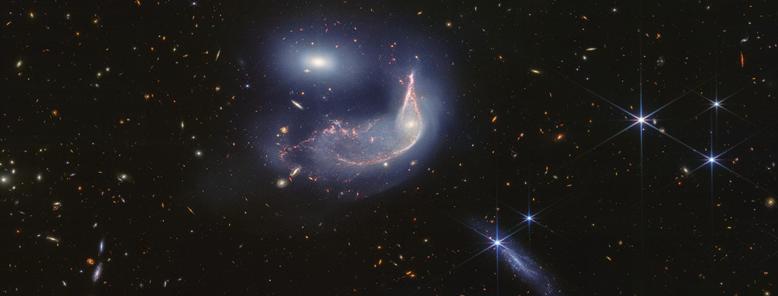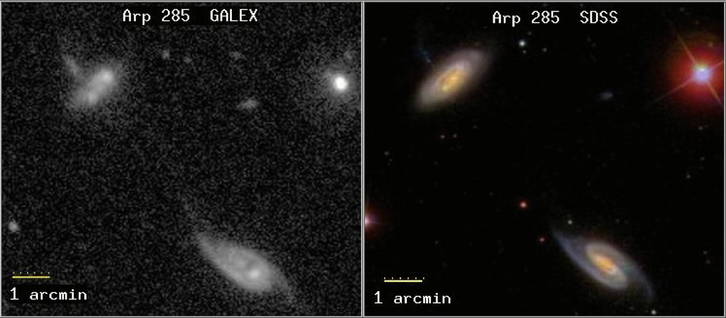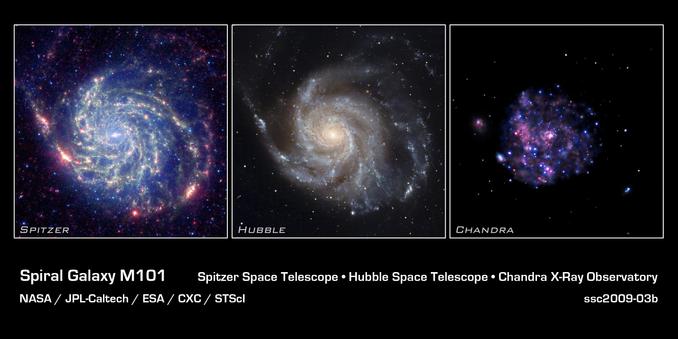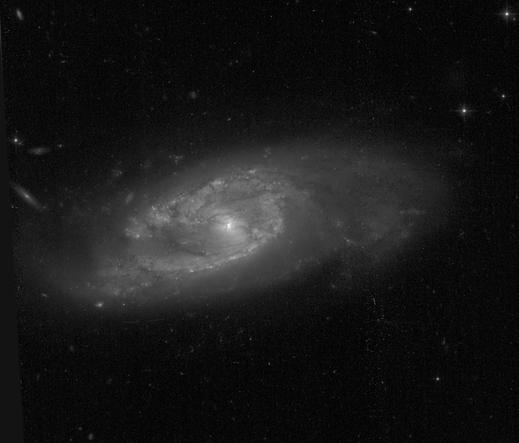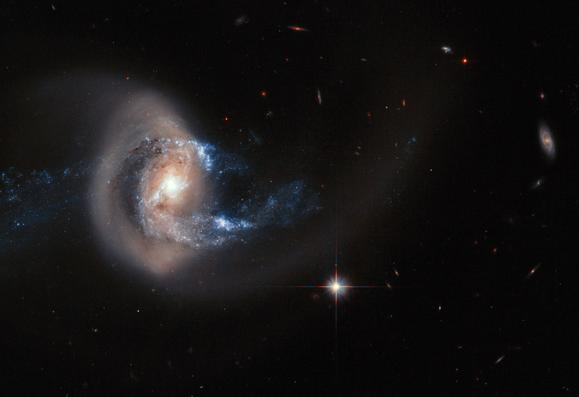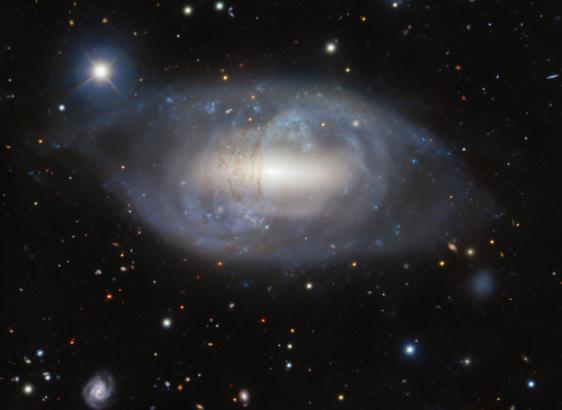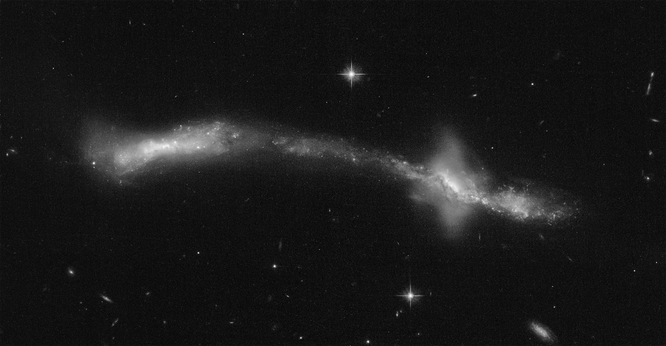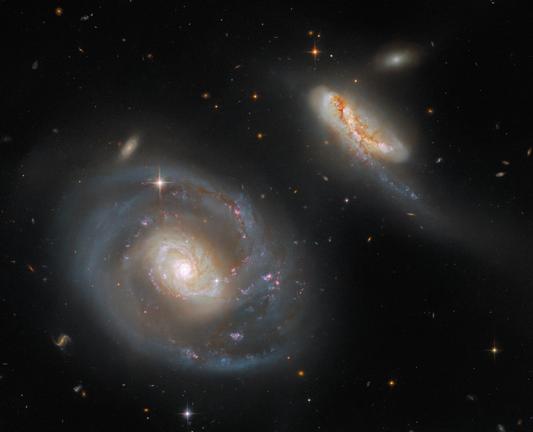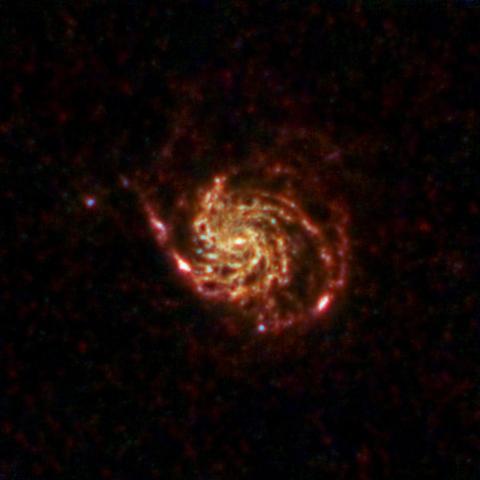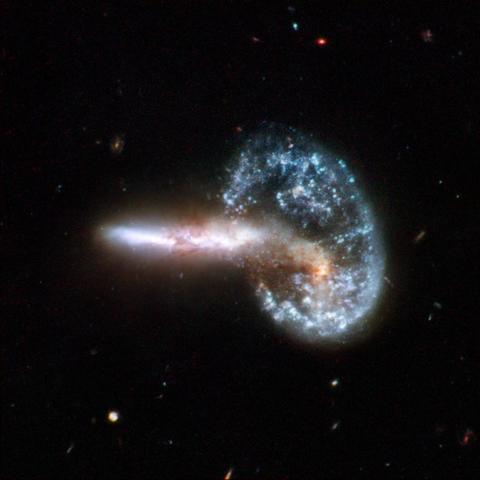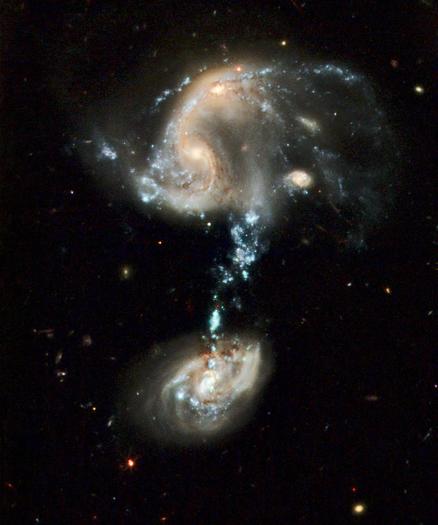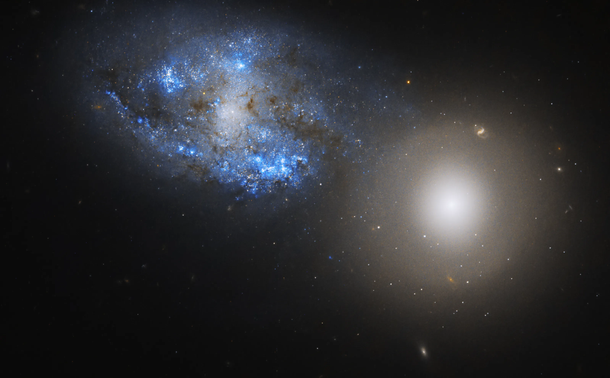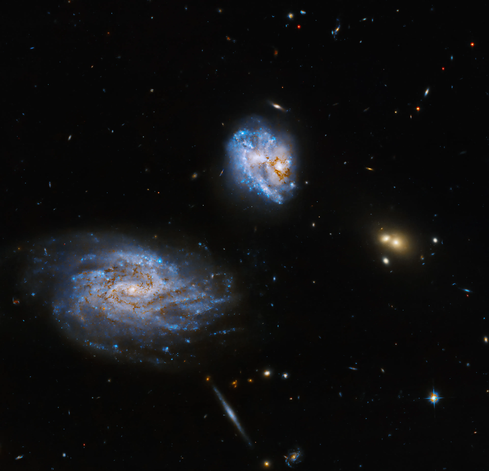JWST NIRCam image of Arp 142, also known as NGC 2936 and NGC 2937, or the Penguin and the Egg.
In this wide view, we see the Penguin (laying on its back) and the Egg, and the foreground edge-on spiral PGC 1237172. There are also a large number of distant galaxies, some seen as tiny spirals and ellipticals, and many appearing as dots.
Credit: NASA, ESA, CSA, STScI
Source: https://webbtelescope.org/contents/media/images/2024/124/01J06XYGEDEE86D1H9N5EJ9EG0


